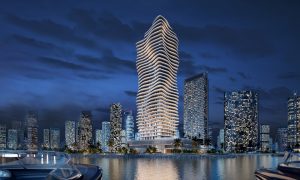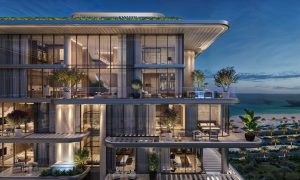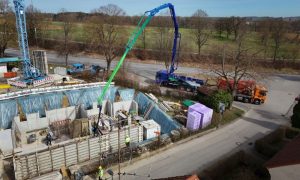Women in Construction: A revitalisation for RoI
Aging and non-compliant properties can be revitalised to maintain return on investment, says Drees & Sommer’s Gesa Rohwedder.

To support the drive towards gender balance in the industry, Middle East Consultant and meconstructionnews.com are highlighting female consruction professionals in a series of profiles. By telling their stories and sharing their experiences on our print and digital platforms, we hope to inspire more women to join this vibrant industry. Here Drees & Sommer’s Gesa Rohwedder talks about how aging and non-compliant properties can be revitalised to maintain return on investment, says Drees & Sommer’s Gesa Rohwedder.
Over the last ten years there has been a 38% increase in hotels and hotel apartment buildings in Dubai, which has created a highly competitive space for developers. A continuous rise in building standards has also made it more difficult for older properties to remain attractive.
If developers, operators and landlords are to achieve renewed return on interest (ROI) in their older hotels, they must undergo a revitalisation project, ideally every 15 years. Dubai currently has more than 500 hotels over ten years old, which has forced the issue of finding a solution to the emerging problem faced by owners of property depreciation and a reduction in ROI.
What we are now facing is the fast depreciation of many of the hotels built during the downturn years, when cost-cutting was a way to complete projects with reduced budget. We now find more and more buildings are in dire need of fundamental repairs because of the low-quality materials used, built that way through commercial decisions at the time. Couple that with the astronomical growth across hospitality construction, and we are left with a highly competitive field within which developers are required to constantly innovate to ensure ROI.
Only 10% of buildings across the Middle East currently comply with the standard air leakage rate allowance. In addition, up to 20% of hotel rooms are unusable due to damage, usually structural or MEP-related. Statistics like this really make the consequences of poorly constructed properties hit home. Revitalisation would resolve all these issues and return capabilities to acceptable ROI-generation levels.
Another pressure on the hospitality industry we are seeing is a need to cater to a wider range of price points of both residents and visitors to the region. As population growth, urbanisation and tourism continue, there is a growing need for affordable options for middle-income guests. According to Euromonitor International in 2017, 20% of adults in the UAE accounted for ‘bottom-income’, while ‘top-income’ residents formed 32% of the country’s adult population, leaving a growing middle-income group of 48%.
According to industry research, hotel construction contracts awarded during 2018 are expected to reach $14bn, with the UAE the largest market. We expect to see the gap between luxury travelers and those travelling for experiential purposes increasingly satisfied.















